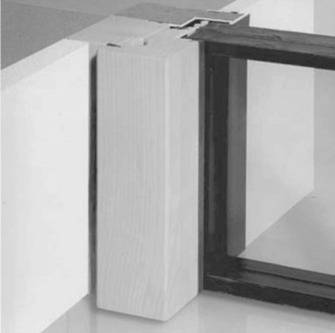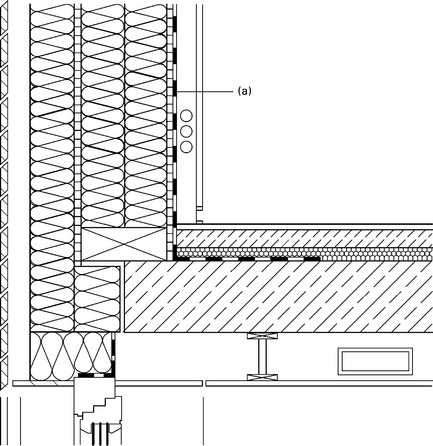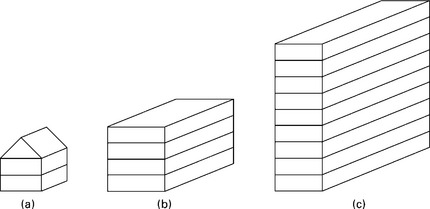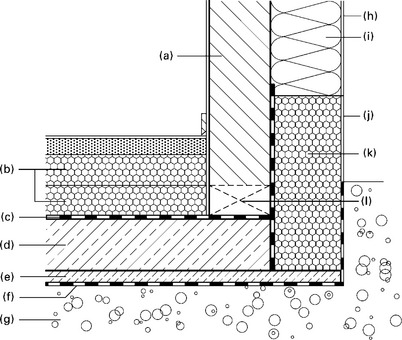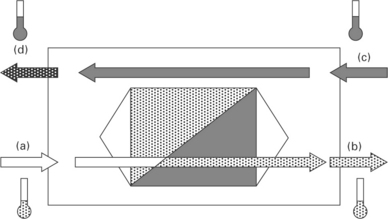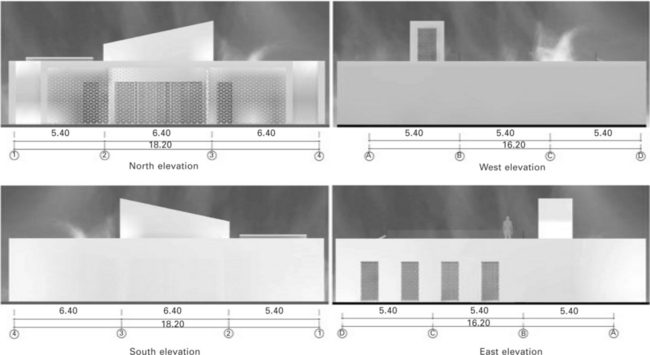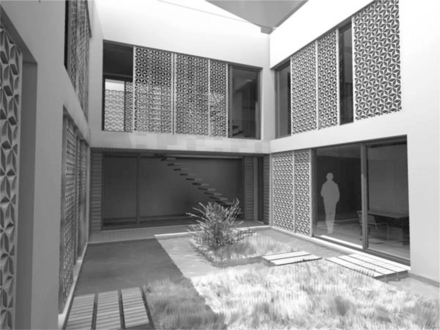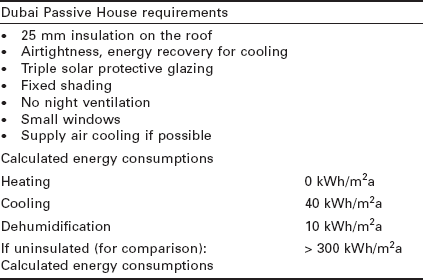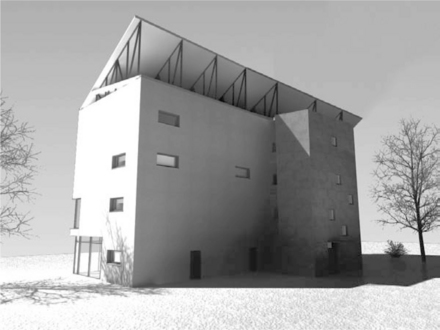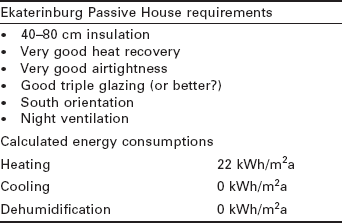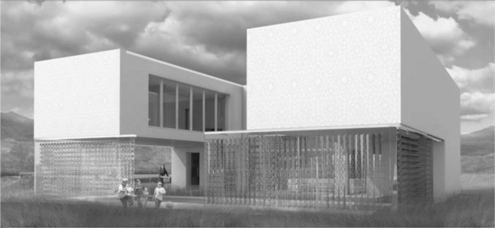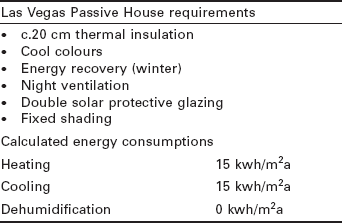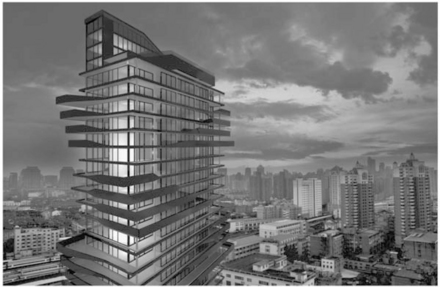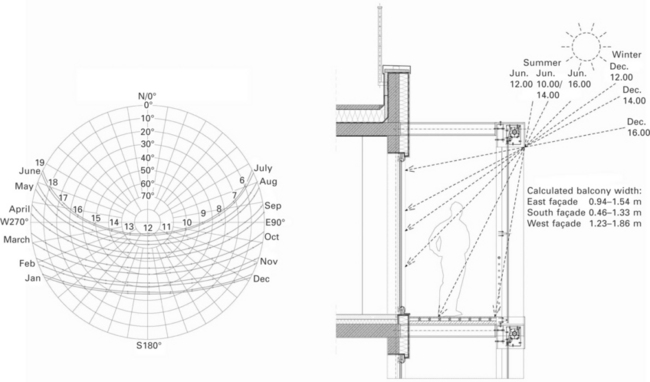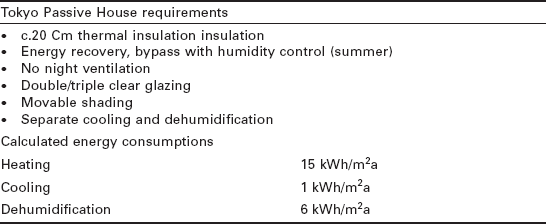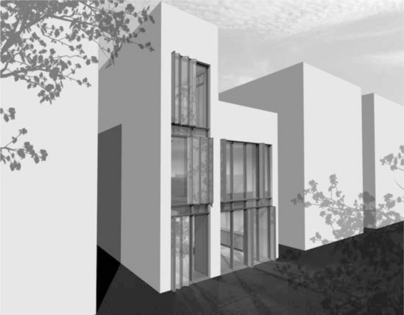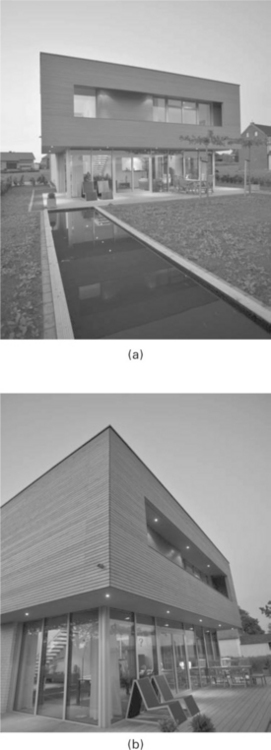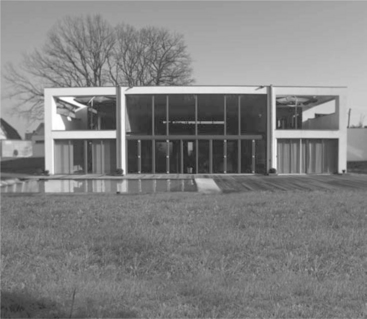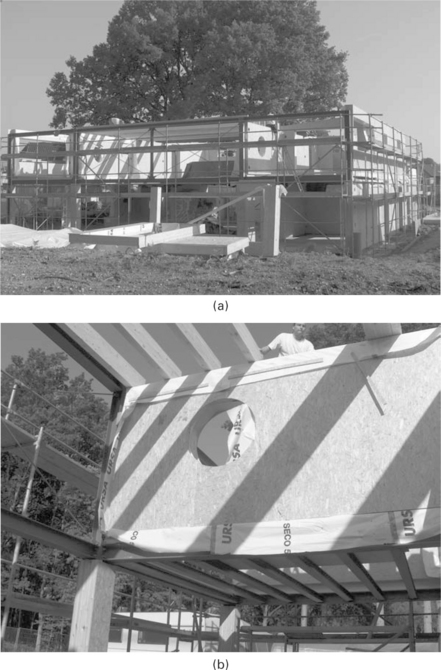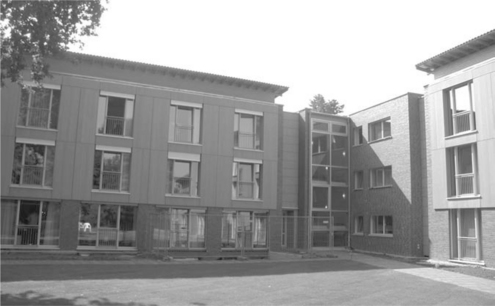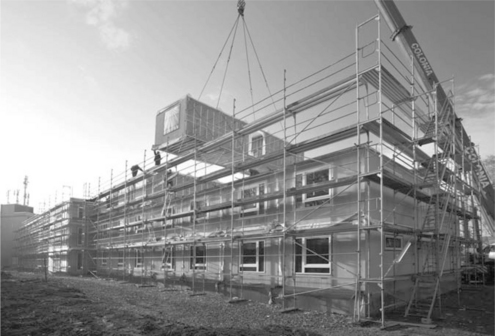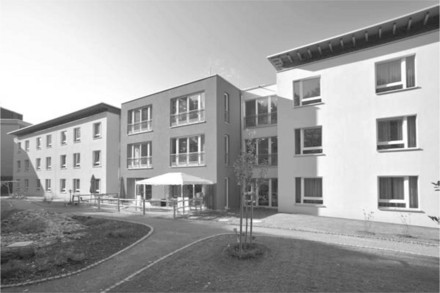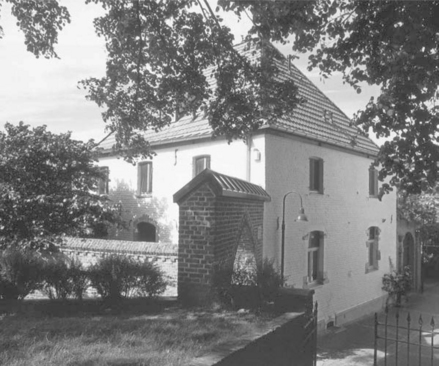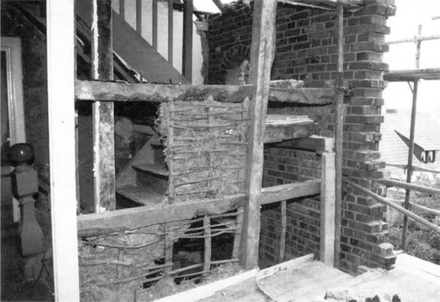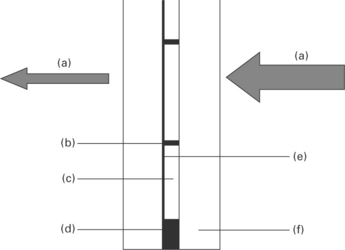Passive house design: a benchmark for thermal mass fabric integration
Abstract:
We live in a time when energy is becoming more precious. Worldwide energy resources are finite and they seem to be running out faster than expected. At this time when energy consumption is rising dramatically in the emerging markets, the opposition to nuclear energy, which in fact cannot be any solution to dwindling energy resources while open security issues are not resolved, is growing. On 30 June 2011, the federal government of Germany decided by law Germany’s final exit from nuclear energy no later than 31 December 2022. There is also the problem of climate change. We will have to reduce CO2 emissions into the atmosphere dramatically if we want to preserve tolerable conditions of life on planet earth ‘for which there are no spare parts’ (Hans Joachim Schellnhuber, director of Potsdam Climate Institute). The biggest challenge of our time is to minimise worldwide energy consumption. The ‘Passive House Standard’ is the worldwide acknowledged leading standard in energy-saving building. Building to the Passive House Standard is one answer to the most important questions of our time. The chapter supplies answers to the questions: ‘Why build to the Passive House Standard?’, ‘What is a Passive House?’ and ‘How do Passive Houses work?’, and outlines planning approaches.
5.1 Introduction
‘The house should be open to the exterior, and permeated by light, air and sunshine. Letting the sun in is a new and imperative task of the architect.’ Le Corbusier, 1943.
Today, any true green architecture project has to use the word ‘sustainable’. Sustainability has become one of the most over-used concepts not only in the field of architecture but also in the economy generally – especially in the advertising industry – and is becoming little more than a catchword. The origins of ‘sustainability’ are rooted in forestry. In forestry, sustainability means not cutting down more trees than are replanted. Sustainable development is economic and social development that meet the demands of the present generation without compromising the demands of the coming generations.
High quality in architecture is not only a question of beauty, it is also a question of function, a question of construction, a question of economy, a question of ecology and, last but not least, it is a question of the well-being of its users. One of the greatest challenges for architects is to drastically reduce energy consumption. This has been a major focus since at least the 1970s. The Organization of the Petroleum Exporting Countries (OPEC) imposed an oil embargo in 1973 after the Yom Kippur War. This prompted the deepest international recession since the great depression of 1929, as a result of increasing oil prices and the throttling back of petroleum production. It also prompted major interest in saving energy.
In November and December 1973, for example, the German Federal Government tried to save energy by decreeing speed limitations and prohibiting driving private cars on Sundays. From 1973 to 1974, the price of petroleum in Germany climbed up from 82.20 Deutsch Marks (DM) to 223.87, despite depreciation of the dollar, which is an increase of around 172.2%. Altogether the Federal Republic of Germany spent nearly 23 billion DM on petroleum in 1974, an increase of 152.7% compared to 1973. From then on, energy costs have increased continuously up to a peak in July 2008, when the price was US$146 per barrel of crude oil. Experts believe that the demand for and price of crude oil will continue to increase.
Even more important than saving energy is the need to protect the environment and reduce carbon dioxide (CO2) emissions into the atmosphere. The phenomenon of global warming is now widely accepted by most climate scientists. The ozone layer area over Antarctica has increased to more than 27 million km2 (News Network Internetservice GmbH, 2006). The potential results include flooding, more extreme weather and extensive loss of biological diversity. Today, CO2 concentration in the atmosphere, an estimated 380 parts per million (ppm), is the highest it has been for 650,000 years.
The International Energy Agency (IEA) has suggested how these CO2 reductions can be achieved with the largest reduction (of about 53%) through improving energy efficiency. There are significant potential savings to be made in the building sector. It has been estimated that 50% of global energy is used for heating buildings, 25% for transportation, 25% for industry. Today, developing countries are growing which means energy consumption is likely to increase worldwide. One chance to save energy is to reduce the energy consumption used for heating and cooling buildings and to build energy-efficient buildings. Drawing on past experience, the Federal Government in Germany has, since 1976, constantly tightened legal measures to save energy in the construction sector (see Table 5.1).
Table 5.1
A history of increasing energy efficiency in buildings in Germany
| Year | Event |
| 1952 | For the first time, a minimal thermal insulation is demanded by law (DIN 4108) to avoid building damage caused by water condensation. |
| 1976 | As a consequence of the oil boycott by OPEC countries, the ‘Energieeinspargesetz’ (Energy Conservation Act) was passed, laying down principles for thermal insulation and heating systems, etc. |
| 1977 | The first ‘Wärmeschutzverordnung’ (Heat Protection Ordinance) was passed, regulating the increased thermal insulation of buildings. For the first time, maximum permitted heat energy consumption of buildings was limited by law – 270 kWh/m2a. |
| 1984 | The second ‘Wärmeschutzverordnung’ (Heat Protection Ordinance) followed. The maximum heat energy consumption of buildings was limited to 180 kWh/m2a. |
| 1995 | By the third ‘Wärmeschutzverordnung’ (Heat Protection Ordinance), the heat energy consumption of buildings was limited to 100 kWh/m2a. |
| 2002 | The ‘Energieeinsparverordnung (EnEV)’ (Energy Conservation Code) 2002 was passed. The heat energy consumption of buildings was limited to 75 kWh/m2a. The so called ‘Low Energy House’ was obligatory for new buildings. |
| 2007 | The ‘Energieeinsparverordnung (EnEV)’ (Energy Conservation Code) 2007 limited permitted primary energy consumption of buildings to about 30% (compared to 2002). |
| 2009 | The ‘Energieeinsparverordnung (EnEV)’ (Energy Conservation Code) 2009 was passed by law in October 2009. The permitted primary energy consumption of buildings was reduced about a further 30% (compared to 2007). |
| Next? | The ‘Energieeinsparverordnung (EnEV)’ (Energy Conservation Code) has already been proposed and is due in 2012. |
As Table 5.1 shows, the requirements for energy efficiency in German buildings have increased steadily and we can already foresee the outcome. The Passive House Standard – the highest energy efficiency standard for buildings worldwide – will soon become the normal building standard in Germany, as well as in all EU countries. In 2006 the EU Commissioner responsible for development, Andris Piebalg, said: ‘The Commission will propose action to ensure that in the longer term our buildings become “near zero emitting” – also called “Passive houses”.’
5.2 Description of Passive House
A ‘Passive House’ is a house that is energy efficient, comfortable, economic and environmentally friendly, all at the same time. ‘Passive House’ is not a brand name but rather an idea which has proved itself in practice, and the ‘Passive House Standard’ is the global leading standard in energy saving building.
‘Passive Houses’ are defined as buildings with a negligible heating energy requirement and therefore they do not need an active heating system. Such houses can be kept warm ‘passively’ by using existing internal heat sources, solar energy and by heating with fresh air supply. A ‘Passive House’ is therefore a building in which comfortable temperatures can be reached without any separate heating or cooling systems both in winter and summer.
Testimony for the feasibility of ‘Passive Houses’ has been discussed in the thesis, ‘Passive houses in central Europe’ (Feist, 1993) using computerized simulations of the energy balance of buildings. In this paper, construction elements that determine the energy consumption of buildings were systematically varied and optimized based on energy efficiency, installation expense and living value. But the first really operable and full Passive House was not a house but rather a polar ship; Fridtjof Nansen’s ‘Fram’. Nansen wrote:
The walls are covered with tarred felt, followed by a cork filling, then panelling made from fire wood, then another thick felt layer, then airtight linoleum and, finally, wood panelling again. The ship walls have got a thickness of approximately 40 centimetres. The windows are protected by triple panes to avoid incoming drafts. Here a warm, cozy atmosphere exists. Whether the thermometer shows 5 degrees or 30 degrees below zero, we have no fire in the stove The ventilation is excellent … because fresh winter air floats down the ventilator. I am mulling over taking away the stove, since it is only in the way.
Of course, the polar ship ‘Fram’ was not designed as a Passive House as we know it today, but Fritjof Nansen’s description corresponds very well with a modern Passive House.
After the ‘low energy house’ (see Table 5.1) was successfully proposed the ‘Passive House’ concept was developed in May 1988 by the German physicist Wolfgang Feist and his host, Professor Bo Adamson, during a research tenure (in the field of building construction) at the University of Lund, Sweden. The first Passive House pilot project was built in 1991, in Darmstadt Kranichstein (Germany), under the direction of Wolfgang Feist. At that time, Feist did not want to call it a ‘House without heating system’ because it still required a heat generator to secure its very low leftover heat demand, though no radiators were necessary for heat distribution. Since then, more than 25,300 Passive Houses have been built in Germany and Austria (IG Passivhaus AT, IG Passivhaus DE), both residential buildings and non-residential (such as office buildings, commercial buildings, sports halls, schools, kindergartens, etc.). There are no boundaries in the use or design of Passive Houses. In architectural competitions, the Passive House Standard is increasingly required.
The energy consumption for heating and cooling in a Passive House amounts to a maximum of 15 kWh/(m2a) equivalent to 1.5 litres (l) of oil or 1.5 cubic metres (m3) gas per square metre (m2) of ‘heated area’ per year. The energy requirement for heating and cooling a Passive House is 80% less in comparison to a new building in Germany in accordance with statutory requirements. In comparison with an average German building standard, a Passive House consumes 90% less energy. These enormous energy savings are achieved mainly as a result of the basic principles of avoiding heat losses, gaining sun energy, thermal bridge-free building and a controlled mechanical ventilation system with heat recovery. The heat load is limited to 10 W/m2. For example, in a Passive House, just two healthy adults as the only energy source are enough to bring a 20 m2 room up to (and keep it at) a comfortable temperature, since one healthy adult has a heat output of about 100 W. An active heating system is therefore not required.
The additional investment costs of a Passive House compared to a standard house are about 5% for small buildings (e.g. single family houses). The larger a Passive House is, the lower the relative costs of more investment. The Passive House Standard is not only a solution for new buildings; it is also possible to refurbish old buildings by using Passive House building components.
Energy optimization for buildings should not be limited to heating energy: all household energy consumption must be minimized. It does not make sense for example, to reduce the heating energy requirement to ‘zero’ by using inefficient electrical devices that create high internal gains (such as incandescent light bulbs, for example). In a Passive House, the primary energy consumption (total energy consumption including energy consumption for warm water supply, household machines, energy transformation and energy provision) is limited to 120 kWh/m2 a.
Apart from a very low heating or cooling demand, the Passive House provides its users with several advantages in comparison to a conventional building. There is a much higher comfort factor because surface temperatures of the inner building façades (walls, windows) are almost uniformly warm. Air draughts as a result of temperature fluctuations do not exist in Passive Houses. ‘Comfort ventilation’ provides continuously fresh and more hygienic air and there is a very low CO2 concentration. Experience has demonstrated that pupils do not get tired as fast in ‘Passive House Schools’ as they do in others. Figure 5.1 shows measured CO2 concentrations in a German school, typical of most schools. During class breaks, when windows are opened, CO2 concentration decreases. CO2 concentration increases significantly as lessons continue. Figure 5.2 shows measured CO2 concentrations in a German Passive House School. The level of CO2 concentration is permanently under 1500 ppm (even during lessons), which is the permitted level for schools in Germany.

5.1 Shows the measured CO2 concentration in a German school. The measurement result is typical for schools. During class breaks, when windows are opened, the concentration of CO2 decreases. The CO2 concentration increases significantly during continual lessons.
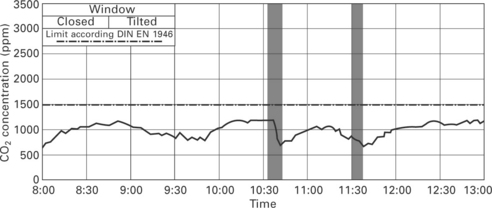
5.2 Shows the measured result of CO2 concentration in a German Passive House School. The level of CO2 concentration is under 1,500 ppm, which is the permitted level for schools in German, even during lessons.
5.2.1 How a Passive House works
Fresh air is drawn into the house from outside at a height of about 2.5 m above ground level because ‘waste’ air (such as CO2, contained in noxious car fumes) is heavier than fresh air and gathers on the ground. After being sucked in, the fresh air is precleaned by a succession of filters, each finer than the last; pollen and allergen filters can also be added. It is clear already that with such a permanent fresh air supply, the internal air supply of Passive Houses is cleaner than that of standard buildings.
After passing through the filters, the fresh air flows into a ventilation device with an air–air heat exchanger. Any waste air from within the house (sucked out of the bathrooms, kitchens and toilets) also enters the air–air heat exchanger. The heat exchanger extracts a minimum of 75% (and in modern heat exchangers, almost 90%) of the waste air’s heat, feeding the heat to the fresh air (but without mixing foul and fresh air together). Clearly, only a small residual amount of heat energy is required to keep the rooms at comfortable temperatures.
Additionally, the fresh air often flows through a ‘ground heat exchanger’ over a longer distance, after passing the filter boxes. Such ground heat exchangers mainly consist of endless lengths of pipes, laid to a depth of about 1.5 m to 2.0 m. By going through this ground heat exchanger, the fresh air takes heat from the terrestrial heat, and is preheated before flowing into the heat exchanger with heat recovery (Fig. 5.3).
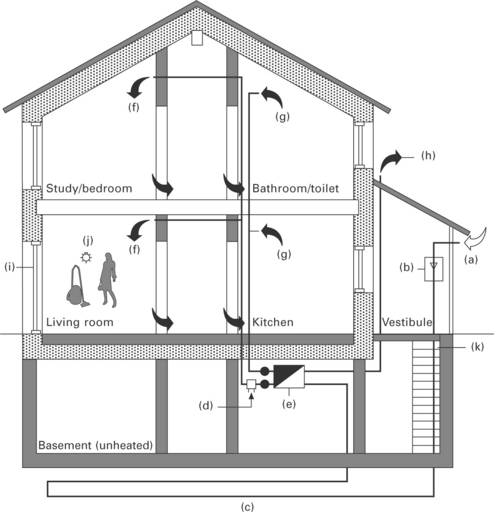
The preheated fresh air then flows with a very low inflow velocity into the rooms, so that there are no uncomfortable drafts or undesirable noises (the ventilation ducts are usually also equipped with silencers). Because of the low humidity ratio of the outside air, lower relative air humidity can arise inside the building during the heating period. If the relative humidity drops below 30% on a permanent basis, this could disturb the comfort zone of residents, since the air would then be perceived to be too dry. The air change rate of the ventilation system should therefore not be set too high. As required, it might also be advisable to reduce the air change rate in winter (ventilation plants with humidity recovery are now on the market to prevent this problem).
5.3 Functional principles of Passive House
A ‘Passive House’ is not high tech, but rather an absolutely uncomplicated, very well thermally insulated and, above all, airtight building. Because of their airtightness, Passive Houses are particularly energy efficient, keeping almost all the heat produced by living creatures and technical appliances (e.g. computers, lamps, etc.) inside the building. To achieve this, careful workmanship and construction are essential. The planning and construction of a Passive House is based on the optimization of all energy-relevant construction components, including those of the opaque building envelope, windows and doors, ventilation, heating, warm water supply and electricity. Therefore, an interdisciplinary collaboration amongst the experts of the different specialist fields is very important.
A passive house-planning-package (PHPP) is a spreadsheet-based design tool to help architects to design to the Passive House Standard. It is the central document for the assessment of the specific values of the construction project, and assists with the choice and sizing of building components. Passive House designers use a PHPP from the very first preliminary design through to execution planning and building construction. In addition, the PHPP is very useful for checking up on the actual consumption values of a realized Passive House. The PHPP clearly shows the necessity of interdisciplinary collaboration.
As a rule, the same planning principles apply for larger Passive Houses as for smaller (e.g. single family and semi-detached) houses. The main principles are:
• Energy consumption should be a maximum of 15 kWh/m2 a for heating and cooling, with maximum primary energy consumption of 120 kWh/m2a for heating, cooling, warm water supply and electrical current (primary energy consumption is the energy consumption of a source of energy plus the amount required for energy regeneration, energy converting and energy sharing).
• Thermal bridges (materials that conduct heat and therefore automatically result in energy losses) should be avoided. Passive Houses have to be built without thermal bridges to avoid unnecessary heat loss through the building envelope. The best-known thermal bridge is metal, e.g. a metal spoon, which conducts the heat from hot water. Passive House windows are triple glazed and heat losses by transmission through the windows are therefore considerably reduced. Solar energy enters the rooms inside through the windows, but hardly any heat is lost through them.
• The building should have an extremely thermal insulated outside envelope. The energy saving emphasis in a Passive House is the reduction of energy losses by transmission and ventilation. This can be achieved by a very good thermal insulation of all external envelope surfaces (roof, external walls, foundations, windows). The thermal transmittance value (U) of exterior walls, roof and floor should have a maximum value such that U ≤ 0.15 W/m2 × K.
• The building should be compact. A compact building helps to achieve an optimal relationship between building volume (V) and its exterior surface area (A), its compactness being determined by A/V. The essential difference between smaller passive houses and larger passive houses is their compactness. This is explained further below.
• The building envelope should be as airtight as possible (which applies not only to Passive Houses). Structural damage caused by condensation can be avoided only if the building envelope is airtight. The quality of airtightness can be checked by a ‘blower door test’, a measuring device with a fan which is incorporated into a window or an exterior door. The test creates a pressure differential of 50 Pascals (P) between the building interior and the air outside, which corresponds to a wind force of 4 to 5 on the Beaufort scale (comparable to a wind speed of 20–38 km/h). During the blower door test, all other windows and exterior doors are closed, and all interior doors in the section being measured are opened. The quantity of air that influxes through leaks into the building envelope under the increased pressure differential is then measured. To achieve sufficient airtightness, relevant details have to be developed carefully in the early planning phase. Successful implementation requires neat and tidy work.
• There should be a ventilation system with heat recovery. Passive House ventilation systems with heat recovery guarantee an economic mode of action.
• Windows should be high quality. Passive House windows have thermally separated frames and are triple-glazed with an inert gas filling between the panes (argon is now commonly used, since the better insulating gas krypton is no longer available in sufficient quantities). The U-value of Passive House windows is ≤ 0.8 W/m2 × K, whilst the g-value (level of energy transfer) is > 50–60% (see Fig. 5.4). In the past, it was often said (incorrectly) that it was not possible to open the windows in a Passive House; in fact, windows can be opened any time, but it is not necessary to do so to secure a fresh air supply. In the early days, thermal isolation requirements resulted in relatively wide window frames and this was a disadvantage from an architectural perspective; however, very thin frames have now long been available on the market(Fig. 5.5).
• In the case of timber constructions the interior airtight surface is the vapour barrier. Such a vapour barrier (in most cases a plastic foil) has to be adhered carefully with special adhesive tape to all connecting structural elements (Fig. 5.6). However, a further special insulation level should generally also be provided to protect against penetration of the airtight level (Fig. 5.6).
• In the case of solid stone buildings, the interior plaster works as the airtight surface. It is therefore important to ensure that the interior plaster continues down to the concrete floor (Fig. 5.7).
• Site and orientation. When realizing an optimized Passive House it is also important to pay attention to the site of the building and its orientation. The optimal orientation of Passive Houses is to the south, except in hot climates. This is an essential condition to gain sufficient solar (passive) energy gains in winter. The house should not be overshadowed by neighbouring buildings or trees because it will receive less sunlight, which is useful for heating the building. An optimal site would be on a south-west facing incline, near to the sea, which serves as heat protection in summer, and near trees (but not overshadowed) to be protected against wind.
5.3.1 Compactness of the building
Compact buildings lose less heat than less compact buildings through the envelope (walls, roofs, windows, building sole or surface against unheated basement) during heating periods (as ‘transmission losses’). The smaller the envelope in relation to the surrounding volume (‘the A/V ratio’), the lower the volume’s specific heat demand. Accordingly, Passive Houses should be as compact as possible. The most compact form of a building would be a sphere, since the volume of a sphere can be wrapped with the smallest envelope area, in relation to all other geometric shapes (a cube being the next most compact geometric shape). However, this does not mean that all Passive Houses should always be sphere- or cube-shaped (to consider this idea further, think about the envelope and A/V relationship of three examples (Fig. 5.8), each with the same volume: the first, arranged as a single cube; the second, as a row eight cubes long; and the third as eight single cubes). Figure 5.9 presents ideal A/V ratios, depending on the building size under consideration. In Fig. 5.10, three shapes (a sphere, a cube and a rectangle), all with exactly the same volume of 1000 m3, are considered. In this case, the most compact building shape is the sphere. However, on the basis of costs alone (spheres requiring a great deal of construction), few owners would select a sphere as their favoured building shape. But it is important to note the general principle that the building shape of a Passive House should be as compact as possible, and therefore should not be more complicated than necessary. Of course, this does not mean that high-quality architecture is impossible in cases of compact building shapes: Ludwig Mies van der Rohe (the famous German architect) famously said: ‘less is more’. And a wise Chinese man said: ‘In simpleness and refinement there is richness’.
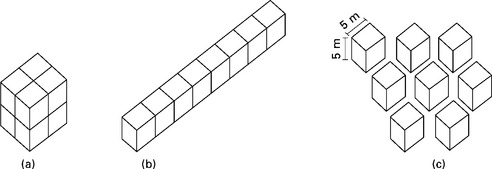
5.3.2 Further design principles
Thermal insulation
Figure 5.11 shows the external wall structure of a Passive House as a solid construction. In this case, the building base is thermally insulated below the floor slab. By doing this, heat bridges in the transitional ‘ structural floor/exterior wall’ area can be avoided. The thermal insulation used must be approved as ‘load-bearing thermal insulation’. In Fig. 5.12 the thermal insulation of the floor slab is placed above the bottom plate. If the building base is thermally insulated above the floor slab in the case of a building without a cellar, then the first masonry layer of the exterior walls should be produced from special offset blocks with a particularly high thermal transmission resistance to avoid further thermal bridges. Figures 5.11 and 5.12 show examples of building envelope structures with accordingly good U values. In the case of Passive Houses with a basement, the entrance into the basement should be from the outside of the thermally controlled volume, for example via an unheated porch or exterior stairs. If this is the case, complicated penetrations of the airtight ‘Passive House envelope’ can be avoided; alternatively, an additional ‘Passive House suitable’ exterior door could be fitted.
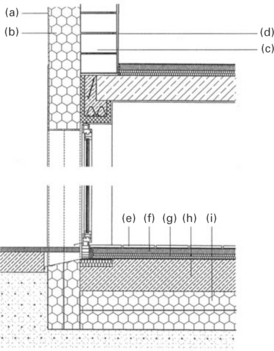
5.11 Monolithic exterior wall built to Passive House Standard (without cellar) – wall make up and soil structure
The earth as a feasible heat storage system
Using the earth as a heat storage device is increasingly popular in Passive Houses. Excess heat from a solar thermal plant is stored in the soil under the building with the help of an inexpensive brine register, installed in the soil. When heat is needed, it can be removed using a heat pump. The bottom of the building should be very well thermally insulated so that, in winter, large transmission heat losses through the base into the ground cannot occur.
Passive cooling
Just as it is possible to heat a building ‘passively’, a building can also be cooled ‘passively’. This is done most effectively by sun protection, geothermal heat-exchange, ‘night’ or ‘free cooling’ using outside air, solar cooling and cooling by heat pump (air conditioning or heat pump in combination, for example, with an earth probe). ‘Night’ or ‘free cooling’ works as a result of the cooling effect due to lower external temperature compared to internal room temperature. Whenever the outside temperature is below a point set for incoming air or room temperature (which frequently happens on summer nights), room air temperature can be lowered by controlled air ventilation. This can be useful not only on summer nights but also in the transition periods (though this assumes that the directly operated heat exchanger is equipped with so-called ‘bypass valves’ and a second outside air inlet; thus the cooler outside air can be transported into the interior of the building whilst heat recovery is avoided, otherwise the air would be ‘heated’ again by the heat recovery unit) (Fig. 5.13). However, the performance of ‘free’ or ‘night’ cooling is relatively low compared to a water-based cooling system, because the flow rates are lower and (in any case) air is not as effective a heat transport medium as water.
The thermal mass of a building (including components with a high weight, such as concrete ceilings and solid walls) cools down the stored surface temperature and discharges it into the rooms again. The thermal storage mass can be increased by using phase changing materials (PCMs) in walls and ceilings. If, in addition, the windows are opened during the coldest 12 hours a day, then there is an increased exchange of air and thus a passive lowering of the internal temperature. No wind is necessary to allow increased air exchange compared to a controlled air ventilation system. In this case, the internal temperature does not decrease below a user-defined minimum (e.g. 22 °C). In the case of high humidity of the outside air natural cooling by fresh air should not be used because of the danger of condensation.
Passive Houses can also be cooled by so-called ‘adiabatic cooling’ whereby water is injected into the ventilation system. For environmental health/sanitary reasons, the water is injected into the exhaust pipe in front of the heat recovery unit. The result is ‘evaporative cooling’, which cools air before it enters the heat exchanger. The fresh air cooled by the heat recovery unit flows through the air intakes into the rooms and cools them down. At first, it was possible to cool down fresh air this way by around 3–4 K; today, heat exchangers with adiabatic cooling are on the market that make it possible to cool down fresh air by 11 K. The very small residual heat energy left can be easily used by a small refrigeration supply system, electrically powered by a photovoltaic system (‘green power’).
If the Passive House being considered has a panel heating system, e.g. underfloor heating, wall heating, an overhead radiator system or activated building components beside the controlled air ventilation system, then rooms can be cooled down by these surfaces without much additional effort. However condensation has to be avoided (Fig. 5.14).
5.4 Case studies of Passive Houses in different climates
At first, the Passive House concept was developed for the Central European climate. Increasingly, however, it is being requested not only for very cold but also for very hot climates. Achieving the Passive House Standard is feasible in all climates.
Under instruction from German Federal Environmental Foundation (DBU), Rongen Architects (Wassenberg, Germany) undertook a research project ‘Passive Houses for different climates’ together with the Passive House Institute and Prof. Dr Feist, Darmstadt, Germany. The project was funded by DBU and by the French group Saint Gobain. The locations studied were Dubai (as an example of a hot and humid climate), Las Vegas (for a hot and dry desert climate), Yekaterinburg in North Russia (as an example of a very cold climate), Shanghai (hot and humid in summer, cold in winter) and, last but not least, Tokyo (with a similar climate to Shanghai but with other requirements for residential buildings). The design for each location was also required to evaluate the respective regionally typical construction methods, design languages and cultural needs of their inhabitants. The buildings described below have not yet been built, but there is great interest in their realization in the countries concerned.
5.4.1 Dubai
In Dubai, the winters are so warm that well-insulated buildings do not require heating, so the design interpretation for this Passive House has been optimized for summer. Bright surfaces and sun protection glazing are also required here, as are triple glazed windows and immovable shading. The Dubai Passive House presents itself outwardly as a one-storey house and is largely introverted (Fig. 5.15). The bedrooms are completely located at basement level. The windows are mainly oriented towards the inner courtyard, which is covered by a translucent membrane. The water areas inside the inner courtyard help to cool it down by evaporation (Fig. 5.16). The water areas are fed partly by grey water.
5.4.2 Ekaterinburg (North Russia)
A multi-storey, mixed-use building was designed for Yekaterinburg. In the typical very long and cold winter periods in the city, excellent thermal insulation is required, which can be realized exactly by today’s available Passive House components. The supply-air heating system provides comfort in all rooms, which are supplied with fresh air by the controlled mechanical ventilation system. In the bathroom, it is occasionally necessary to turn on a small radiator, which can also be used for warming up and drying towels. Because of the very long and severe winters, building periods are very short in Yekaterinburg and we therefore recommended a prefabricated modular building system. Because of the strict fire prevention requirements, a timber structure was not a possibility and so we developed steel modular constructions to the Passive House Standard, with a composite thermal insulation system. The stair enclosure and the passenger lift are located outside the thermally controlled volume in a separate block in front of the actual residential building (Figs 5.17 and 5.18). By doing this, only one Passive House door for each floor is necessary and airtightness, especially in view of the lift, is easier to implement.
5.4.3 Las Vegas
In the desert climate of Las Vegas, with moderately cold, sunny winters, impact sound insulation in the basement ceiling already fulfils the duties of thermal insulation. The winter in Las Vegas is not so harsh, so the energy balance can handle even double glazed solar glazing. For the façades and the roof, light colours (‘cool colours’), which do not absorb sunlight should be used (see Fig. 5.19).
5.4.4 Shanghai
For Shanghai, Rongen Architects designed a high-rise building with three underground parking floors, a three-storey mixed-use base and 23 residential floors. In this building, the overhanging and thermal bridge-free balconies shadow the floors below (see Fig. 5.20). The depth of the balconies varies from 0.84–1.92 m, depending on the solar altitude on the hottest summer days (Fig. 5.21).
5.4.5 Tokyo
Tokyo has a very similar climate to that of Shanghai and, here, a moderate thermal insulation and double glazed windows are sufficient. However, because of the confined construction site (the distance to a neighbouring house is often only 1.20 m and houses often shade each other), single family houses in Tokyo rarely gain direct solar radiation. Thus, triple-glazed windows are required. These relatively small houses have a bad A/V ratio and the habit of parking a car on the individual plots of land does not immediately facilitate the realization of a Passive House. The roof surface is used for the family ‘garden’ (Fig. 5.22).
5.5 Examples of Passive House architecture in Germany
Passive House technology is a successful method for realizing a highly energy efficient building standard, which is also sustainable. Some examples of Passive Houses that have already been built can be found below.
5.5.1 Houben-Engels House, Hückelhoven
Architects: Rongen Architects GmbH
This single family house opens to the south and to the west with a wonderful view of the landscape. The photovoltaic panels shade the bedrooms in the upper floor in the summer when the sun is very high and, in this way, overheating of the bedrooms is avoided without using movable sun protection elements (see Fig. 5.23). On the ground floor, the façades are covered with varnished larch timber battens to anticipate the silver grey appearance of natural weathering. Larch wood is water resistant and therefore it will not be necessary to paint the timber battens again in the future. On the upper floor, the façades are plastered and painted white, in contrast to the wooden façades of the ground floor.
5.5.2 Hanssen-Höppener House, Selfkant
Architects: Rongen Architects GmbH
The ‘Hanssen-Höppener’ House, in Selfkant, is a sustainable CO2-neutral Passive House. The large window areas on the east, south and west sides supply the interior with bright daylight. However, despite the large windows, movable sun protection screens (which would require electric energy) are not needed, since the building does not overheat in summer. The high southern sun does not penetrate into the open living area and, on the upper floor, the framed overhanging balcony prevents the lower floor from overheating; the overhang shadows the windows below (Fig. 5.24a and 5.24b). A pond in the garden is oriented to the southwest, from where the warm summer wind blows. By placing it here, the water evaporates and creates evaporation cooling to cool the floor-to-ceiling glazing. As a result of warm water supply from a solar-water heater, and heat supply from a wood pellet oven and a heat pump, and also electric power supply from photovoltaic panels on the roof, the ‘Hanssen-Höppener’ Passive House is CO2 neutral. The façades of the Hanssen-Höppener’ House are partially covered with sustainable wood. The larch timber battens will weather naturally and over time will become more and more resistant to the influence of the weather.
5.5.3 Dr and Dr Sander House
Architects: Rongen Architects GmbH
The ‘Dr and Dr Sander’ House is a 410 m2 luxury mansion built to the Passive House Standard as a prefabricated timber construction (see Figure 5.25). Figures 5.26a and 5.26b show the building under construction. In the first two years, the energy costs for heating and cooling the house were less than €250 per year. Because all the windows can be opened, the summer heat can exit via a chimney effect, dispensing with the need for movable sun protection screens. The sun’s energy warms up the pool.
5.5.4 The Caritas House, Neuwerk
Architects: Rongen Architects GmbH
The new Caritas elderly care centre in Mönchengladbach-Neuwerk is the first elderly care centre in Europe built to the Passive House Standard, and combines a modern group-living concept with advanced environmental technology (Fig. 5.27). Not only does the Passive House require extremely little active heating energy, it also provides a much higher than average quality of room air and thus an improved quality of living. Large areas of green space lie in the immediate vicinity. The direct vicinity of the church and other public facilities will assist in promoting community relations. The ‘Caritas House Neuwerk’, as it has been named, is particularly intended to provide those suffering from dementia with dignity and living accommodation appropriate to their illness. The intention was to create a building identified by key concepts such as security, esteem, self-determination, freedom, closeness and a homely atmosphere.
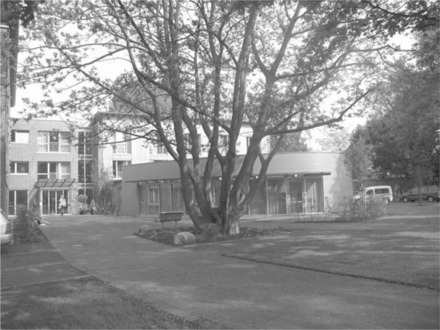
5.27 View to the entrance and dining room of The Caritas House Neuwerk. Photo courtesy of Rongen Architects GmbH.
The new elderly care centre can accommodate a total of 80 residents and is divided into eight apartments, each with 10 residents. This living structure allows each group of 10 to establish a family-type way of life. All fundamental activities of a structured daily nature are carried out within the protected bounds of this stable family group. In each case there is one direct care and nursing area for every two or three groups of residents. This area includes a care room, a duty room, a care bathroom and other complementary rooms.
Due to the high standard of sanitary facilities and equipment – all rooms are single rooms with their own shower – it can be assumed that the ward bathroom with its lift-assisted bath tub will not often be used during the normal daily routine. Its main function – in accordance with the care concept – is to be used as a pleasant care and bathing experience. The offer of such opportunities leads to a clear gain in quality of life, especially for the increasing number of geronto-psychiatric people, whilst the building helps to ensure that basic care and treatment have priority over individual showers and baths.
The manageable size of the groups assists the therapeutic concept. Residents and nursing personnel know one another, housekeeping tasks (i.e. using the facilities) help to retain orientation. The readiness of orientated and, in some cases, less orientated residents with dementia to take on a certain joint responsibility has increased. The positioning of the entrances to each of the group apartments in the general living room/rest room area is also intended to ‘bring this zone to life’. Due to the restricted number of residents in each group, the frequency of contacts and movement remains manageable for the residents.
The design/plan as realized provides for an administrative area of the house on the ground floor. A room for worship and meditation provides an opportunity for mutual prayer as well as communication, but it is also a room in which to withdraw and be alone with oneself. The dining room, which is in the immediate neighbourhood of the main entrance and the meditation room, opens up towards the entrance to the building and to the Engelbecker Straße, which means there is a lot to see outside (Fig. 5.28).
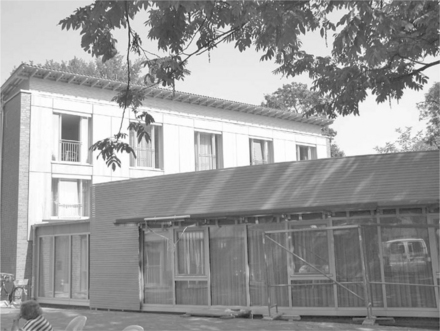
5.28 Unmovable outside sun protection for the dining room. Photo courtesy of Rongen Architects GmbH.
The single rooms have been built in such a way that two single rooms can be adapted to make a double room (for married couples), which can easily be converted back into single rooms with no rebuilding work required. Thus, should one of the partners die, the remaining resident can stay in the old familiar group and does not need to move into another new group.
The supporting structure of the Caritas House Neuwerk is a partly cellared, reinforced concrete, skeleton construction. The exterior walls are mainly composed of prefabricated sandwiched panel elements made of wooden materials and, on the ground floor, have a front-shell of bricks (clinker). Although built to the Passive House Standard, the overall building is highly structured, which makes it easy to comprehend and understand. It is not an anonymous accommodation machine. The partly protruding lean-to roofs give the building a certain lightness of appearance which, up until now, Passive Houses have often lacked. The shaping and layout of outdoor areas invites residents to spend time there and carry out activities in the fresh air (Fig. 5.29). In addition, these areas offer places of peace and quiet outside of the house.
A problem brought repeatedly to our attention – long before our very first draft – which occurs regularly in care homes and which had not yet been solved was the smell of urine, which is typical for such establishments. It was for this reason that we came up with the idea of proposing a solution with ‘controlled permanent ventilation’. Controlled permanent ventilation reduces the problem of ‘urine smell’ considerably, and will perhaps even dispose of it entirely. Additionally, the permanent and comfortable quality of room air is ensured because, whenever humidity gets too high, the excess moisture is withdrawn.
The materials selected for the exterior façade – red clinker, varnished wooden boards, coloured window frames (wooden window frames to Passive House Standard) together with the window sunshades – act together to form a lively building but without creating an unsettled impression. Originally it seemed that varnished wooden boards would not be allowed as an element of the façade. Following long negotiations with the fire brigade and the building authorities responsible, we were able to convince them to refrain from applying requirement B1 (slightly inflammable) to the façade elements, thus avoiding a costly and tedious technical building licensing procedure (i.e. through the Institute for Building Technology in Berlin). After all, with regards to the question of fire protection, the prefabricated sandwiched panel elements that form the basis of the construction are better than the simple, chemically treated wooden board elements classified as B1 in the fire protection classifications. Following negotiations with the Ministry for Building and Accommodation in North Rhine–Westphalia, the double-layered, load-bearing, thermal insulation beneath the ground slab (the perimeter insulation) was approved ‘for this individual case’, which led to a large saving in costs.
For the care home company and for the residents too who, in the end, will have to bear the costs, the very low heating costs were one decisive argument to build an establishment to the Passive House Standard. The particularly high level of quality of life offered weighs even more in favour of such a decision. For elderly people who still want to take part in life ‘outside’ whilst sitting inside (and who are therefore often found close to the windows), it is of great benefit to no longer suffer from the draughts. The permanently high quality of air, containing an extremely low concentration of CO2 is also beneficial to the residents. The only possible problem encountered by residents, was getting used to ‘properly airing’ the Passive House, i.e. realizing that it is not necessary always to open windows; however, this is a problem equally encountered by younger generations.
The insulated building shell of the Passive House enables the reduction of heating levels. It is not necessary to install radiators in the residents’ rooms, for example. The glazing from floor to ceiling leads to an increase in usable space of approximately 1 m2 per resident room, which would otherwise be ‘wasted’ living space. Small meters set into suspended ceilings over the baths measure the air temperature and allow individual residual heating requirements to be achieved.
Fresh air at all times coupled with permanent vacuum removal of WC/bathroom odours ensures permanent and comfortable air quality, whilst at the same time high concentrations of moisture are removed. outside air is sucked in through a ground thermal converter, pre-warmed in winter and cooled down in summer. Filtered outside air holds back dust and pollen and to a certain degree bacteria as well.
To avoid the usual necessity of fire protection flaps between fire areas, exterior air is directed up the façade from outside to decentralized ventilators at each floor level. Five resident rooms are orientated on the points of the compass, each forming one airing unit. Therefore, if cooling is required, nursing personnel are able to switch off the heat recovery system and let in cool air through the ground thermal converter. In this way, for example, in autumn, the southern side could be cooled whilst at the same time the heat recovery system or the heating system could heat the northern side.
Had the house building been financed by a loan from the bank, the cost to borrow the extra capital required to build to Passive House Standard, rather than the normal WSchVO 1995 standards would have been approximately €3835 (at 5.5% interest and with 1.0% repayment). This should be compared with the savings on heating costs made by building to Passive House Standard, which have been calculated to be approximately €14,087 per year. As a result, it can be assumed that had the house been financed in this way, there would have been a saving in operating costs of €10,252 per year.
5.5.5 The Caritas House, St Josef, Mönchengladbach-Giesenkirchen
Architects: Rongen Architects GmbH
The Caritas House St Josef (Mönchengladbach-Giesenkirchen) is the first elderly care centre constructed in a prefabricated steel modular system to the Passive House Standard. The existing elderly care centre in St Joseph Mönchengladbach-Giesenkirchen was originally going to be renovated but, after carefully considering the financial costs and social consequences (e.g. the mobile care required for current residents during the construction period), the client decided against an extensive refurbishment. In the end, the decision was made to build a new building and to partially demolish the existing care centre, which dates from the 1960s. The remaining portion of the existing building and the new building together constitute a new elderly care nursing centre.
At first, part of the building was vacated. One part was then rebuilt while the rest remained fully occupied. The new building has 84 single rooms, workplaces and care areas, etc., realized in a prefabricated modular steel system (see Fig. 5.30). Relocation of residents into the new rooms did not begin until the new building was completely built, after which the rest of the demolition followed. The main building was demolished down to the ground floor, which was then renovated, rebuilt and integrated into the new building (the entrance area, kitchen and dining room being located in it). The entire new building, including a chapel on the ground floor of the previous building, was built to the Passive House Standard. As a result of the decision to use a prefabricated modular system, the construction time was reduced from 20 to 5 months (module size = 3.89 × 15.25 × 3.20 m (height)).
The decision to realize the entire new building to Passive House Standard and to renew the remainder of the predecessor building using Passive House components, was made easy by the client (Caritas Association Mönchengladbach), who had already had very good experiences of the Passive House Standard in other care centres in Europe. The Caritas House St Josef was the first of their homes, indeed the first anywhere, not to smell of urine and, additionally, it cost less than originally calculated (Fig. 5.31).
5.5.6 Grammar School, Baesweiler
Architects: Rongen Architects GmbH
The Baesweiler city government commissioned an analytical study of 21 municipal buildings. After finishing the study, it was to be decided which building should be refurbished first and which energy standard should be achieved. The result was a decision to start with the grammar school, consisting of four buildings and a gymnasium. It was very important for the client to improve not only energy efficiency but also the artistic design (Fig. 5.32). The ambitious goal was to follow the ‘Passive House Standard’, making the project unique because it is the biggest project to have been refurbished to this standard, and is also the first redevelopment to Passive House Standard with a curtain wall.
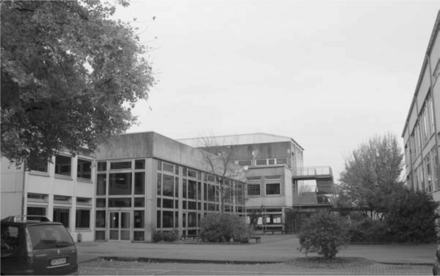
5.32 Construction phases 3 and 4 of the school buildings before refurbishment. Photo courtesy of Rongen Architects GmbH.
The calculated savings in heating energy are about 90% and the CO2 reduction will be more than 530 tons per year. In the summer, the school is ‘passively’ cooled. Sun protection prevents overheating of the classrooms and, using automatically controlled window opening at night, the building mass is cooled down by cool night air. During the following day, the building mass stores heat (Fig. 5.33).
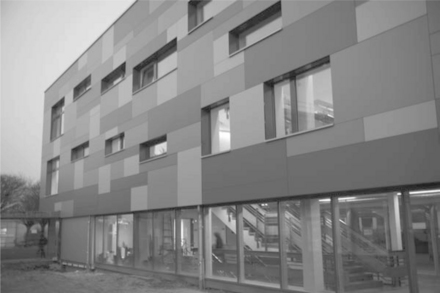
5.33 Sections of the school buildings after refurbishment. Photo courtesy of Rongen Architects GmbH.
On 18 November 2010, the first stage was honoured as one of the winning projects in a Germany-wide ‘Local Climate Protection’ competition, winning prize money of €40 000.
5.5.7 Stiftsplatz 6 memorial, Wassenberg
Architects: Rongen Architects GmbH
This single family house is a listed memorial (Fig. 5.34).The originally dilapidated ‘Stiftsplatz 6’ memorial was restored with ecological materials and in sympathetic architectural language. The earlier renovation using pumice building blocks was removed completely. All exterior walls were thermally insulated inside using rush matting (Fig. 5.35), in front of which a new interior wall of clay bricks (plastered with clay plaster) was built. This wall structure reached a thermal quality equivalent to a very good ‘Low Energy House’. The frame walls inside were also filled in with clay bricks, or renewed with clay plaster (Fig. 5.36). Clay has very positive physical properties; one of which is the ability to regulate moisture.
5.6 Future trends
The high demand for Passive Houses in Europe has caused enormous development of appropriate structural components, which has resulted not only in an improvement of the quality but also in lower costs. And there appears to be no end in sight for further development of innovative structural components, especially for Passive Houses. One of the most remarkable innovations is vacuum glazing, which easily reaches a U-value of 0.8 W/m2K for the glass plates with only double glazing. The total thickness of such windows is only 10 mm. Such windows are not only clearly thinner but also lighter than conventional double glazing. It is assumed that vacuum glazing will become a mass product in the near future and will thus become an economical alternative to triple glazed windows (Fig. 5.37).
Very good thermal insulation of the building envelope of Passive Houses can now be realized in an attractive, aesthetically pleasing way. A number of innovative products are available such as high-performance insulation in CFC-free rigid foam Resole, a building material with a thermal conductivity of 0.22 W/m2K.
While very thick insulation can be planned comparatively easily in the case of new buildings, the situation in the case of old buildings is very different. All too often, thick insulation packages are unfeasible and also not recommended. Vacuum insulation panels (VIP) with average -values of 0.004 W/mK require much thinner thermal insulation for the same insulating properties as conventional insulation, opening up new possibilities; but even vacuum insulation panels are still relatively expensive.
The transparent high-performance insulation material Nanogel, which has a thermal conductivity of 0.0018 W/mK, is also increasingly used. Nanogel is an aero gel based on silicic acid. Because it consists of 97% air, it is very light, weighing between 60 and 80 g/m3. Despite the low weight, the sound insulation properties of Nanogel are very good. Aero gels are among the easiest and most effective insulation materials available today, and are hydrophobic and thus moisture- and mould-resistant.
So far, Passive House design has very much been focused on energy efficiency. In building Passive Houses, architects will begin to use more and more ecological building materials in the future. In this respect, clay is an ideal example. Clay is a healthy and environmentally compatible material, today enjoying a return to popularity. The energy demand for its production as a building material is very low and its use as a building material therefore significantly reduces primary energy demand. Clay is also a good thermal conductor. Because of its high specific heat capacity, clay walls are able to compensate for temperature differences. In hot climates, therefore, thick adobe walls provide a pleasant indoor climate. And because of its rapid moisture absorption, clay influences the indoor climate positively and thus promotes healthy living. Due to the equable heat radiation of massive clay walls, air drafts do not happen and this too increases living comfort. Clay emits no pollutants, has no known effects on allergies and has a lot of positive ecological properties. Moreover, clay has very good acoustic properties and is able to shield high-frequency electromagnetic radiation. Adobe walls are 100% recyclable and can be returned for disposal directly back into the environment.
5.7 Sources of further information
Books
Hestermann, Ulf and Rongen, Ludwig (2010) Frick/Knöll Baukonstruktionslehre 1, 35th Edition. Vieweg + Teubner Verlag, Wiesbaden, Germany
Neumann, Dietrich, Hestermann, Ulf and Rongen, Ludwig (2008) Frick/Knöll Baukonstruktionslehre 2. 33rd Edition. Vieweg + Teubner Verlag, Wiesbaden, Germany
www.fiz-karlsruhe.de (BINE Information service)
International Passive House conference 2011, available at: www.passivhaustagung.de/sechzehnte/Englisch/index_eng.php
5.8. References
Feist, W. Passive Houses in Central Europe. Germany: Dissertation, University of Kassel; 1993.
Nansen, F. In Night and Ice, the Norwegian Polar Expedition, 1893–1896. Leipzig: F A Brockhaus; 1897.
News Network Internetservice GmbH. Rekordozonloch über Südpol: 27,45 Mio.km2 – Fläche von USA und Russland zusammen. available from: www.news.at/articles/0642/35/154507/rekordozonloch-suedpol-27-45-mio-flaeche-usarussland, 2006.


